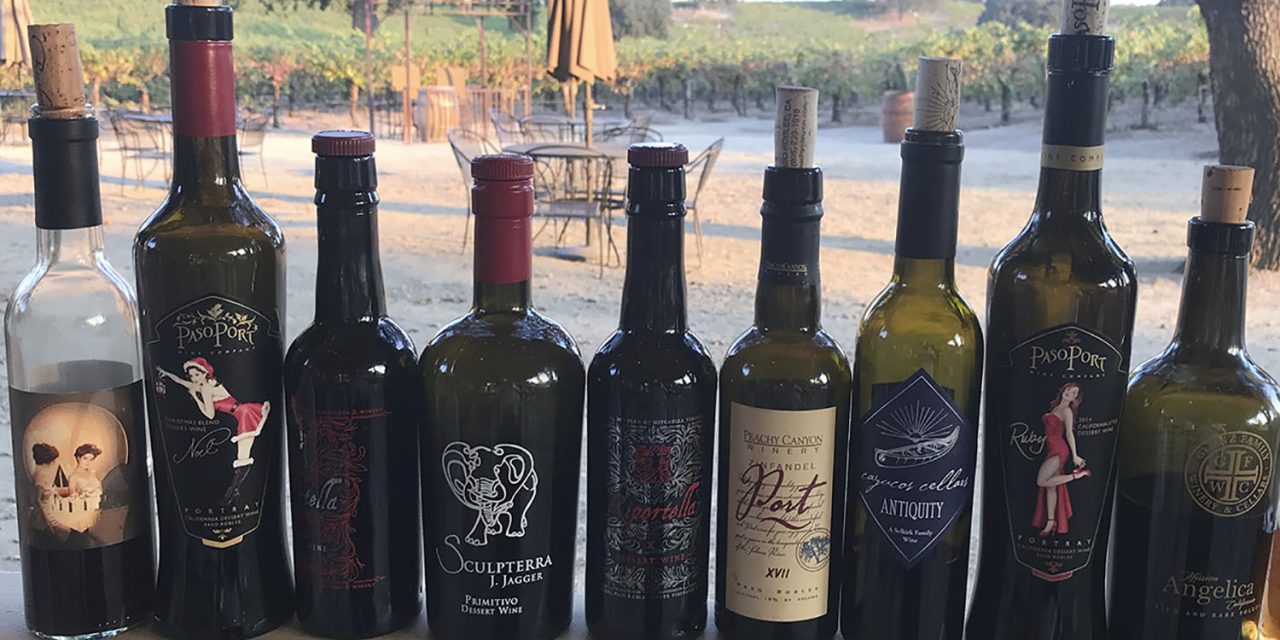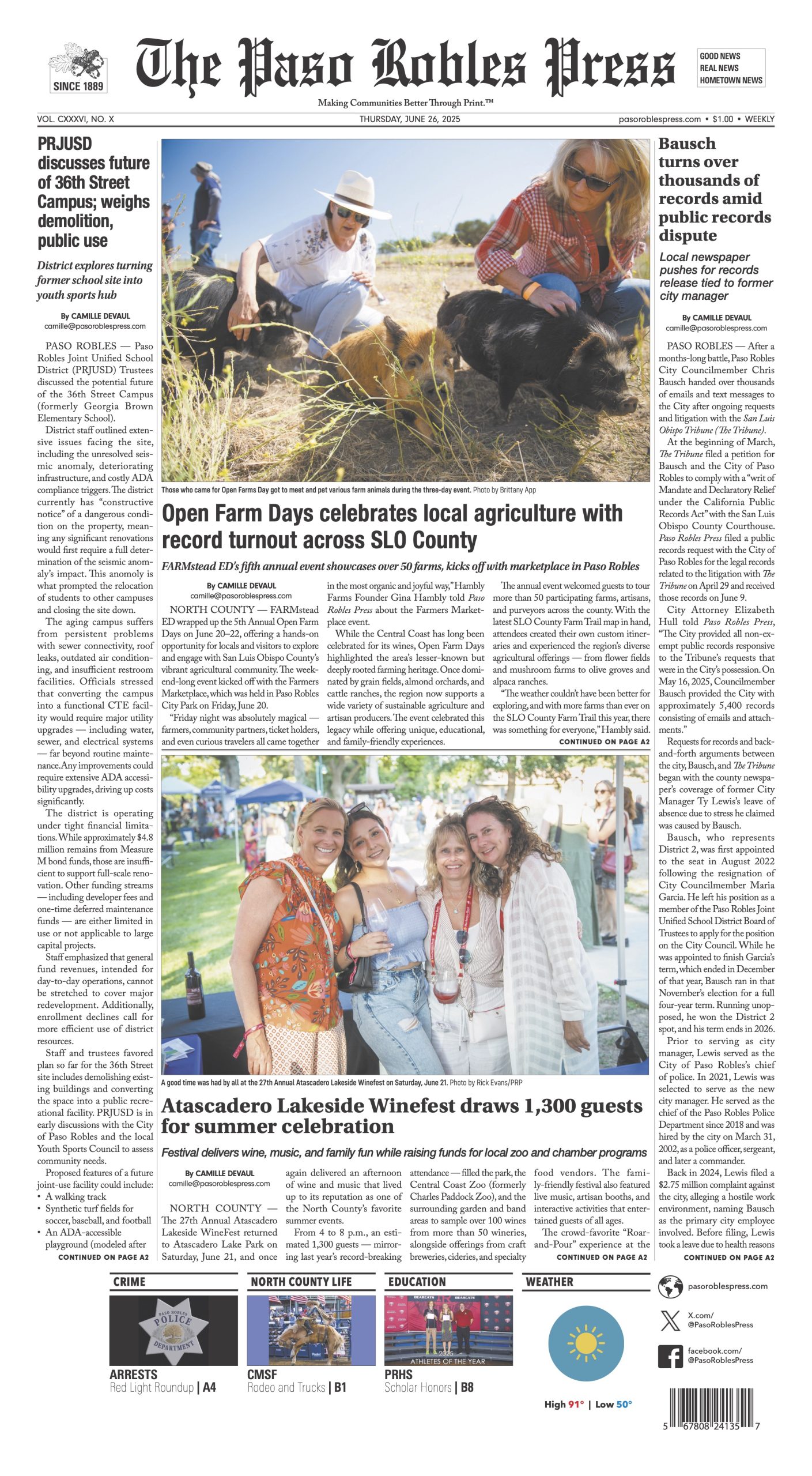As we get into the final stretch of 2020, having endured such a tempestuous year, let’s welcome the holidays with a smile on our face and a delectable taste on our palates.
Yes, it’s time for decadent sweet wines, slowly sipped and savored by a crackling fireplace. Deliciously seductive wines that entice you with flavors of baked spice mingling with an explosion of fresh berries, stewed fruits, chocolate sauce and caramel.

Yet sweet wines are not limited to après-meal; their versatility makes them an excellent companion to a holiday platter of strong cheeses, charcuterie and foie gras, delivering a magical yin-yang of sweet and salty flavors.
I reached out to a few local winemakers and found a vibrant selection in Paso. From late harvest and Angelica to Port and Sherry styles, I found that winemakers have an abundance of local grape varieties to choose from, using not just the traditional Portuguese grapes but also Rhône and Bordeaux varieties along with zinfandel.
The most popular dessert wine has long been the late harvest. As the name suggests, grapes are harvested late to intensify the fruit’s sugar content to the point they get dehydrated to a raisiny stage.
But in recent years both Port and Sherry styles are taking over with Paso winemakers. Port, the Portuguese sweet wine, is produced with grapes exclusively from Portugal’s Duoro Valley and fortified with high strength grape spirit during fermentation. Sherry, which can range from bone dry to sweet, is a white wine native to Jerez, Spain made predominantly with the Palomina grape and fortified after fermentation is complete.
To get the low down on Paso sweet wines, winemaker Paul Frankel and I organized a small tasting at his Sculpterra Winery where we sampled ten wines. “Sweet wines have come back,” announced Frankel uncorking J. Jagger, his Port-style non-vintage primitivo, a blend of four vintages from 2008-2012.
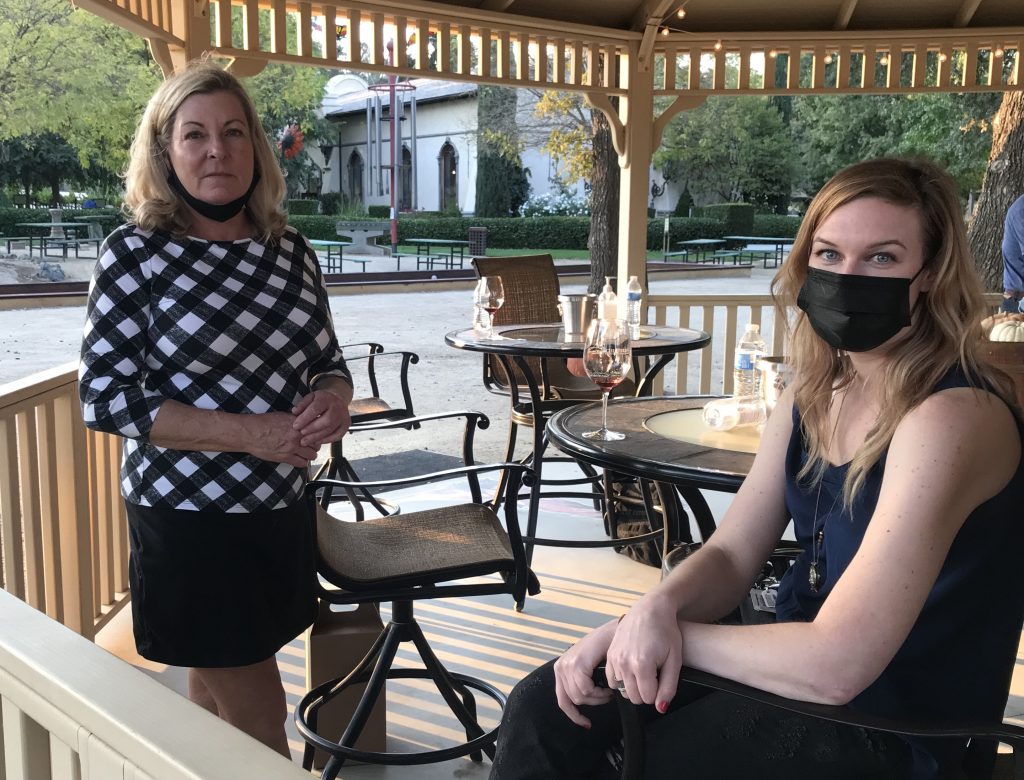
“We chose primitivo from our property,” Frankel said. “It’s a good candidate for Port as it holds acidity with ripe flavors,” he continued as we luxuriated in the caramel-laced wine redolent with fig flavors.
Matt Glunz of Glunz Family Winery & Cellars poured the Rich & Rare Mission Angelica, produced in the solera-style. Angelica, Glunz explained, was first produced here by Franciscan missionaries in the late 1700s using Mission grapes.
Solera is an aging method for fortified wines. Glunz’s solera setup consists of a stack of barrels that sit 12 across and six barrels high. Each year a small amount of wine is taken from the bottom row of barrels for that year’s bottling and replaced with wines from the second row; the process repeated until the sixth row’s void is topped off with the young wine. Glunz noted that it takes many years for the younger wines to reach the bottom, remarrying into the more mature wines.

“We take 12 percent from the bottom of the barrel each year,” Glunz said of each year’s bottling. “Some of the wine in your glass probably dates back to 1958.“ Years of aging gave depth and complexity to the Intensely fragrant and seductively sweet Angelica.
Other solera-style wines we sampled included Bushong Wine Company’s Sweet Illusions, a Sherry-style wine made from pinot noir variety; and two versions of Riportella — Mitchella Vineyard & Winery’s Port-style made from the Portuguese varieties, tinta nacional and tinta cao.
“Our solera has been going on for 25 years,” noted Angela Mitchell, who co-founded Mitchella with her husband Darren. “We pull out 25 to 30 percent for each year’s bottling,” she said of the velvety smooth solera-style rich with hints of spice and licorice. The youthful 2015, on the other hand, was lush with blackberries and balanced acidity.
Stuart Selkirk, owner of Cayucos Cellars, poured his bold and lush 2005 Antiquity, a zinfandel fortified wine, made with native yeast and barrel-aged in neutral French oak for 15 years.
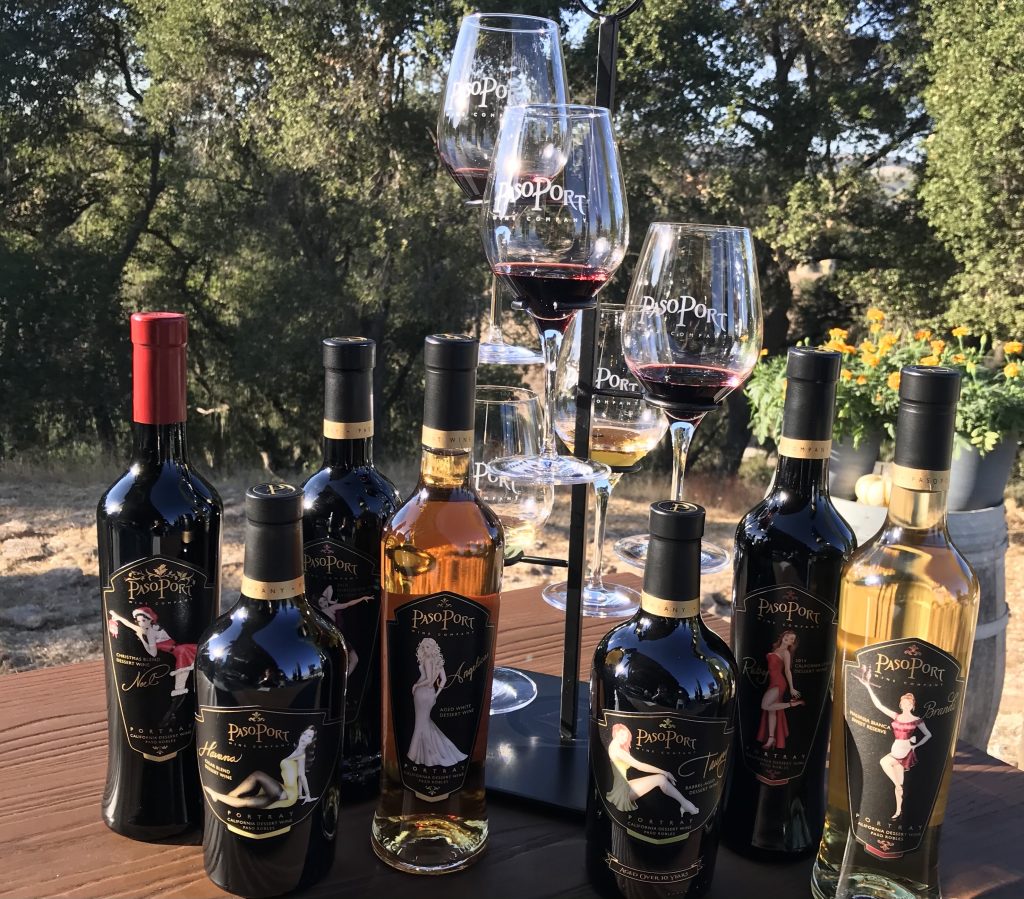
At Pasoport, the allure of Port begins with the seductive images flanking the uphill driveway leading to the winery owned by Steve and Lola Glossner. “Port was popular in the post-Prohibition era,” commented Glossner seated on the winery’s airy terrace. “Steve wanted to go back to that era and its iconic pin-ups,” she explained of the Identifiable artwork created by a local artist.
Pasoport’s unique tasting is presented to visitors in a towering five-glass caddy. The lineup includes Violetta (LBV) port, a blend of souzão, touriga nacional and tinto cão; the Ruby port rich with zinfandel, petite sirah, tempranillo and tinta amarela; and a holiday Noel port offering a surprise blend annually. The Brandi Malvasia Sweet Reserve and Angelica white Port are two intensely aromatic wines evoking a stroll in a scented field of flowers.
The names of Port and Sherry are protected under the European Union Protected Designation of Origin established guidelines. For example, as of 2006, only wines made in Portugal can bear the name “Port” or “Porto” on the bottle’s front label.
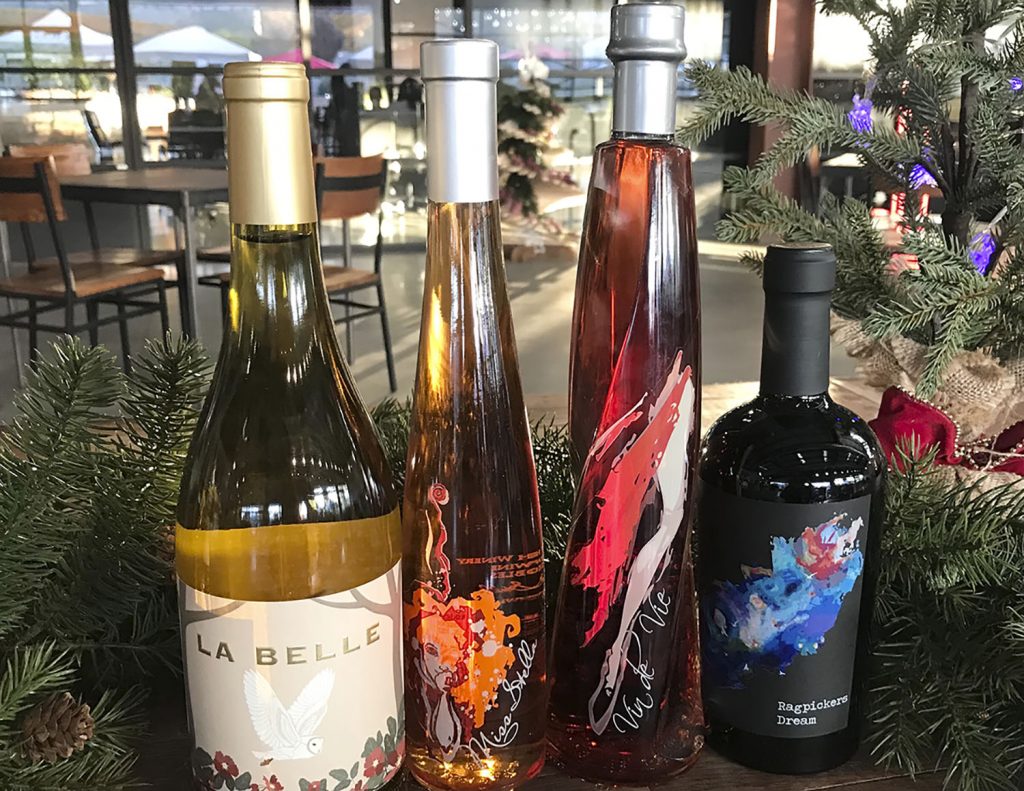
Glossner explained the challenges they faced to register their Pasoport brand. After a nine-month battle, they were allowed to use the name and its eye-popping artwork as the back label. The front label bears the name Portray and the wine’s alcohol content. (What qualifies as the bottle’s front label is the information on government warning and the alcohol content).
But wineries such as Eberle and Robert Hall are grandfathered in, Glossner explained. “To use the port name on their front labels as they were pre-approved prior to 2006.”
At Broken Earth, Chris Cameron, director of winemaking, presented an impressive lineup of vividly colorful and aromatic wines such as La Belle, Vin De Vie, grenache-based redolent with coconut flavor and the solera style, intensely rich Rustique. Of the deep-hued, Ragpicker’s Dream, Cameron said: “I made it originally as vintage Port, but it’s aged for 10 years and that makes it Tawny Port.”
Villa Creek Cellars’ production of Neo Noir occurred by happenstance. Joanne Cherry’s inspiration came about from a trip to Banyuls (in southwest France) which led to utilizing the raisiny grapes, destined for composting were turned instead into a syrah-grenache blend of plumy sweet wine. Her husband Cris Cherry noted that the Banyuls-style winemaking is a three-year process as the fermented wine fortified with grain spirit is aged in basket-wrapped glass bobonnes for one year and in neutral oak for another two.
Four Lanterns Winery’s Aurene, a late harvest viognier, is another accidental contender. In 2013, part of the vineyard suffered frost damage, but there was a lot of viognier left that was usable, recalled owner/winemaker Steve Gleason.
“On Thanksgiving Day, the kids picked it and stomped on it,” Gleason said as we quaffed the golden-hued, nectar effusive of quince flavors, made in a solera style.
Other delicious late harvest wines include the fragrant honey-laced roussanne from Sans Liege, Tablas Creek’s Petit Manseng, seductive with spun sugar flavors, an aged 2010 zinfandel from Croad Vineyards and sweeties from Asuncion Ridge, Changala and Clos Soléne.
Barr Estate, Vino Vargas, ZinAlly, J. Dusi, Chronic Cellars, Brochelle, Peachy Canyon, Bon Niche, Lusso Della Terra, Red Soles, Kramer Guitar Cellars, Graveyard Vineyards and Adelaida Vineyards’ The Don are among other Paso wineries crafting distinctive sweet wines.
So this holiday season, satisfy your sweet cravings with a sip of sweet wine and welcome 2021 in high spirits. You deserve it!
Drink responsibly in good health.

